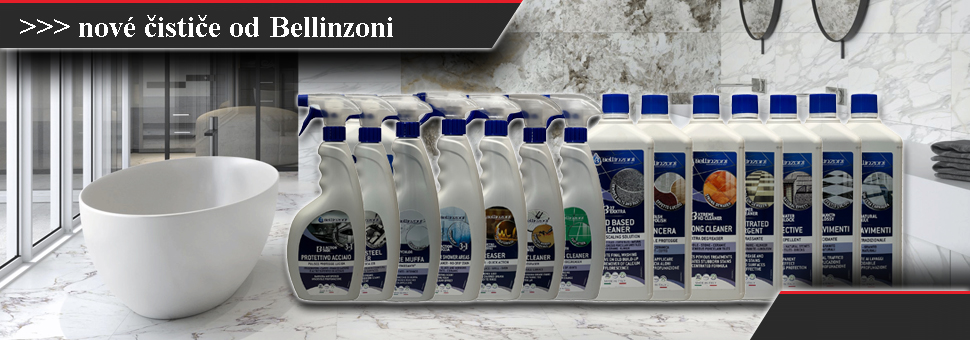You often turn to us for advice on how to proceed when processing "your stone". When identifying the material, confusion often occurs when identifying marble and granite. Visually, these are very similar materials, but they differ in composition and at the same time in the way of processing. This is related to the choice of tools, or cleaning and impregnating agents.
Do you need to sand or clean an older grave in the cemetery?
The first step is the correct identification of the material. The most frequently used materials are:
- Marble - a rarely used stone nowadays. It loses its shine over time, for example due to acid rain or an incorrectly selected acid cleaner. However, it is still a valuable natural material. Lighter colors predominate, such as white or pink with veins or patterns.
- Earthenware or also called terrazzo is a mixture of cement with a special fraction of colored marble rubble. In principle, it is a high-quality concrete mixture, which, after hardening, is polished with several procedures of grinding wheels. That is why the name "artificial stone" is also used.
- Among all available materials, granite is referred to as the highest quality, hardest or most durable. After high-quality craftsmanship, its shine is stable for many years in most cases. It is not sensitive to acids (acidic cleaners, pollution, acid rain). Its texture is more colorful with crystalline grains and a wide color spectrum
 Graves made of marble exposed to harsh weather conditions.
Graves made of marble exposed to harsh weather conditions.
How to identify the material in the interior?
Stone not exposed to external weathering is more stable in the interior. In fact, by using stone chemistry correctly, you can increase the resistance of even not very high-quality stone several times.
- Marble in the interior has always been a symbol of luxury. But ask yourself, where have you seen marble polished to a high shine? Probably in new buildings, where the surface of the material is already treated with impregnation or crystallization. It is a process that results in a high gloss that is resistant to scratches and chemicals. It follows that without proper mechanical and chemical treatment it is perhaps more appropriate to keep the surface of the material matte or semi-glossy (see churches, interiors of older buildings, staircases, parapets)
- Stoneware, terrazzo, and nowadays also exposed concrete is still modern, durable and largely a natural material due to its composition. Similar to graves, the structure depends on the size of the marble or granite rubble used. This material is more stable in interiors, but without thorough polishing and impregnation, it is also quite absorbent. Due to the increased concentration of calcium and marble, this material is also sensitive to acidic cleaners and acidic pollution (vinegar, wine, lemon juice, etc.)
- Granite used for a kitchen worktop, window sill, or staircase is an ideal and durable material. Due to its composition, it is not difficult to maintain, the polished surface is more durable. However, it is also an absorbent material to some extent, and by using the right protective coating (impregnation) you will prevent the absorption of dirt and grease. For example, in the case of a kitchen worktop, we recommend thorough impregnation, but at the same time we emphasize a protective substance with a food certificate.
How do I know if it is marble or granite?
- visually, by comparing texture (drawing) and color. Granite has a crystalline and granular texture with a wide color spectrum. Marble has a more integral structure, pale shades with veins and patterns.
- acid test (eg hydrochloric acid), vinegar or lemon juice. On marble, the result will be a chemical reaction on the surface, a loss of luster or a significant stain. Granite is more chemically resistant and will not react with acid.
- Hardness test. Granite is a harder material than marble. Marble can be scratched with a sharp object leaving visible marks
- The gloss or the height of the gloss can be compared well with older materials. Granite retains a high gloss for many years, while marble loses its gloss over time and remains dull. This condition can be treated chemically and mechanically.
- Heat resistance. Marble is less heat resistant than granite. Placing a hot object on the marble may cause discoloration or damage
However, it is important to note that these methods are only indicative and will not always provide an accurate result. If in doubt, the best way to confirm for sure is to consult a rock expert or geologist who can perform more accurate tests and provide a reliable identification.
We are the first in Slovakia to present a new range of professional cleaners intended for home and professional use. By clicking on the image, you will be redirected to the eShop
ATTENTION: carefully consider the brand of stone chemistry, the product, the procedure and, last but not least, the seller. He should provide you with professional advice, explain the procedure and point out the risks. Similar products for processing and treating stone, but of dubious quality (color fastness, vapor permeability, resistance to UV radiation, etc.), are available in common building materials or hobby market chains. Improper use can cause permanent damage. Consult the experts on this issue. Often there is only one attempt or one step to problems.
In case of questions, do not hesitate to contact us. We are regularly trained in the given issue and ready to answer your questions.
Pavol Saray, CEO of DiaSegment s.r.o.
Expert advice
diamantovenastroje.cz@gmail.com

